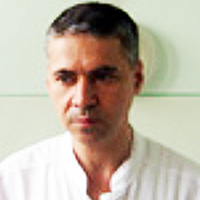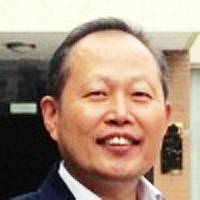Synthesis and Biological Evaluation of Fluorescein-Tagged 1-Methyl-o-carborane for Boron Neutron Capture Therapy
Published on: 26th October, 2018
OCLC Number/Unique Identifier: 7905963630
Fluorescein was conjugated with 1-methyl-o-carborane and the resulting bioconjugate was biologically evaluated through microscopic and flow cytometric studies in pancreatic cancer and squamous cell carcinoma cell lines. The uniform distribution of this bioconjugate, as well as its moderate cytotoxicity and higher boron content relative to present boronated delivery agents sodium borocaptate (BSH) and boronophenylalanine (BPA), provide justification for its further evaluation as a potential delivery agent for BNCT.
Boron neutron capture therapy for the treatment of lung cancer and assessment of dose received by organs at risk
Published on: 16th September, 2022
Recent studies on boron neutron capture therapy (BNCT) have focused on investigating the appropriate neutron sources based on accelerators for neutron production, such as 7Li(p,n)7 Be. The therapeutic abilities of BNCT have been studied for the possible treatment of lung cancer using thermal and epithermal neutron beams. For neutron transport, the Monte Carlo N-particle transport code was used, and doses in the organs of different Oak Ridge National Laboratory phantoms were evaluated. The right lung was meshed with voxels to obtain depth-dose distributions using 1 eV, 10 eV, 100 eV, 1 keV, 5 keV, 8 keV and 10 keV energy sources. These results suggest that BNCT with an epithermal neutron beam can be used to treat lung cancer. By evaluating the biological dose rate and dose-depth distribution curves in healthy tissues and tumors by simulating a lung phantom, the quantities in the phantom were also evaluated. Our calculations show that with increasing boron concentration applied to the tumor, the dose is increased and the 100 eV energy source has the greatest effect on the tumor dose.
Nuclear science and magnetic carbon: a promising way from a chemical method to detect and fight cancer and tumors/neoplasms
Published on: 17th April, 2023
In 2005 we reported for the first time on a chemical route aiming to synthesize stable magnetic carbon/graphite. By using the Nuclear Magnetic Resonance (NMR) technique we have verified that its magnetism is an intrinsic property of this synthesized material and not originated from ferromagnetic impurities of any kind. Through direct measurement of the local magnetic field using Carbon-13, we have concluded that its magnetism originated from defects in the structure. From its biocompatibility, we have been working on the use of magnetic carbon/graphite to deliver many compounds aiming to fight different diseases. Despite all the scientific and technological advances of the present day, cancer is a multifactorial and difficult-to-treat disease, killing hundreds of thousands of people a year worldwide. Therefore, the development of a new and efficient drug delivery system to fight cancer – among other diseases - is as important as the discovery of a novel active molecule. In this review of our own work, we show the drug delivery system named MAGUS® (an acronym for Magnetic Graphite Universal System) we have built based on nanostructured magnetic carbon/graphite. This is an innovative and promising system composed of a biocompatible nanostructured particle of magnetic carbon/graphite functionalized with different molecules and materials. MAGUS®, depending on what we link to its structure, is so versatile and can be used to detect a wide range of specimens, from tumors and cancers to chemical and biological agents used as non-conventional weapons. That is why we call it universal. In the present work, MAGUS® will be acting as a biosensor, where the magnetic carbon/graphite is functionalized with radioactive particles of Iodine-131 and antibodies of different types of cancer. Then, by focusing on both the antigen-antibody interaction and the spatial guiding through an external magnetic field we are providing our drug delivery system a double way to detect and reach just the target. Based on these strategies, the functionalized magnetic carbon/graphite will reach only the neoplasm and not the surrounding healthy cells around. In a general view, it means that we are giving specificity to the MAGUS® drug delivery system as a pioneering and effective way to detect and treat cancers. We are also working on this unprecedented and efficient drug delivery system using the principles of Boron Neutron Capture Therapy (BNCT) with Boron-10 instead of Iodine-131. BNCT technique uses neutrons as the external source and is frequently employed to treat specific tumors that are radio resistant or very difficult to kill using conventional radiation therapy. In summary, we show here for the first time that our Magnetic Graphite Universal System associated with nuclear techniques can be successfully used as a biosensor to detect and fight cancers and tumors with powerful features that conventional delivery drug systems and other treatments do not have at all.
















